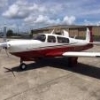-
Members Online
- Austintatious
- Shadrach
- N201MKTurbo
- dkkim73
- Whynot
- Skyland
- PT20J
- MB65E
- Matt_AZ
- Scottknoll
- carusoam
- Florian Guthardt
- 1967 427
- adverseyaw
- larryb
- N177MC
- Mooneydreamr
- LABravo
- Rotorhead
- firelog1101
- Ivan
- 802flyer
- Grandmas Flying Couch
- mariosmt
- 201guy
- Rmfriday
- peterl
- Rusty Pilot
- Stealth Mooney
- Hank
- Epatry
- Planegary


Recommended Posts
Join the conversation
You can post now and register later. If you have an account, sign in now to post with your account.